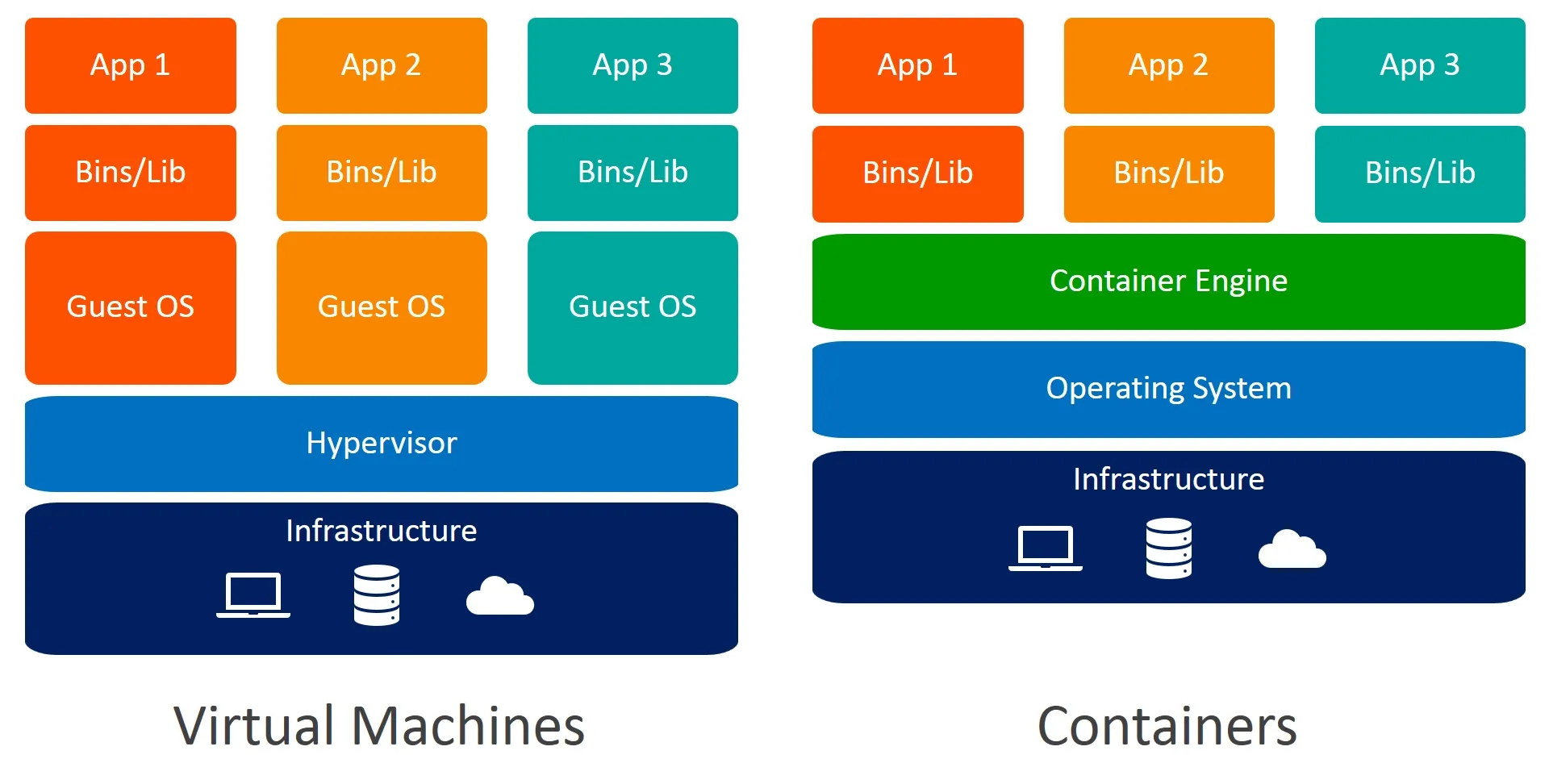What is Docker?
Docker is a set of platform as a service products that use OS-level virtualization to deliver software in packages called containers. Containers are isolated from one another and bundle their own software, libraries and configuration files,
that allows IT organizations to quickly create, deploy, and run applications in Docker containers, which have all the dependencies within them. The container itself is a very lightweight package with all the instructions and dependencies—such as frameworks, libraries, and bins within it.
The Docker container can be moved from environment to environment very easily. In a DevOps life cycle, Docker really shines when used for deployment. When you deploy your solution, you want to guarantee that the code tested will actually work in the production environment.
Images and containers
Fundamentally, a container is nothing but a running process, with some added encapsulation features applied to it in order to keep it isolated from the host and from other containers. One of the most important aspects of container isolation is that each container interacts with its own, private filesystem; this filesystem is provided by a Docker image.
An image includes everything needed to run an application — the code or binary, runtimes, dependencies, and any other filesystem objects required.
Containers and virtual machines
A container runs natively on Linux and shares the kernel of the host machine with other containers. It runs a discrete process, taking no more memory than any other executable, making it lightweight.
By contrast, a virtual machine (VM) runs a full-blown “guest” operating system with virtual access to host resources through a hypervisor. In general, VMs incur a lot of overhead beyond what is being consumed by your application logic.
In the image, you’ll notice some major differences, including:
The virtual environment has a hypervisor layer, whereas Docker has a Docker engine layer.
There are additional layers of libraries within the virtual machine, each of which compounds and creates very significant differences between a Docker environment and a virtual machine environment.
With a virtual machine, the memory usage is very high, whereas, in a Docker environment, memory usage is very low.
In terms of performance, when you start building out a virtual machine, particularly when you have more than one virtual machine on a server, the performance becomes poorer. With Docker, the performance is always high because of the single Docker engine.
In terms of portability, virtual machines just are not ideal. They’re still dependent on the host operating system, and a lot of problems can happen when you use virtual machines for portability. In contrast, Docker was designed for portability. You can actually build solutions in a Docker container, and the solution is guaranteed to work as you have built it no matter where it’s hosted.
The boot-up time for a virtual machine is fairly slow in comparison to the boot-up time for a Docker environment, in which boot-up is almost instantaneous.
One of the other challenges of using a virtual machine is that if you have unused memory within the environment, you cannot reallocate it. If you set up an environment that has 9 gigabytes of memory, and 6 of those gigabytes are free, you cannot do anything with that unused memory. With Docker, if you have free memory, you can reallocate and reuse it across other containers used within the Docker environment.
Another challenge of virtual machines is that running multiples of them in a single environment can lead to instability and performance issues. Docker, on the other hand, is designed to run multiple containers in the same environment—it actually gets better with more containers run in that hosted single Docker engine.
Virtual machines have portability issues; the software can work on one machine, but if you move that virtual machine to another machine, suddenly some of the software won’t work, because some dependencies will not be inherited correctly. Docker is designed to be able to run across multiple environments and to be deployed easily across systems.
The boot-up time for a virtual machine is about a few minutes, in contrast to the milliseconds it takes for a Docker environment to boot up.

